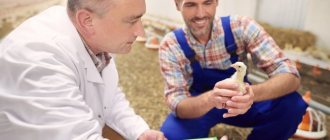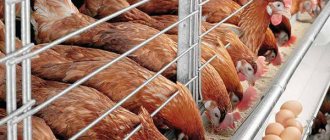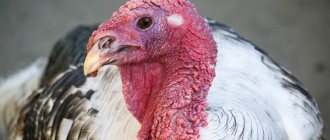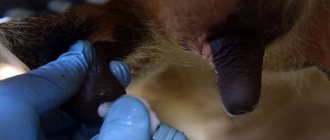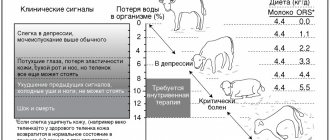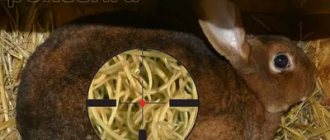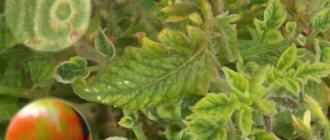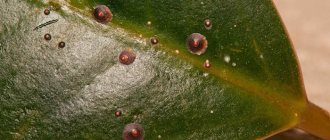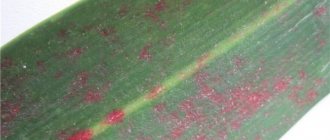Features of pasteurellosis in chickens
The causative agent is pathogenic bacilli - Pasteurella P.Haemolytica and P.Multocida. Birds infected with bacilli are immediately slaughtered and the chicken coop is disinfected. One sick chicken is enough for 75% of the flock to die in the shortest possible time.
The causative agent of the disease was isolated and grown in 1880 by L. Pasteur. In honor of the scientist, the bacterium got its name – Pasteurella.
All types of chickens - meat and egg - are susceptible to the disease, but young animals are especially vulnerable. Pasteurellosis is more common in countries with temperate and warm climates, less often in the north. Fowl cholera occurs both in homesteads and in large egg production farms. Even if a bird survives the disease, it is forever a source of infection - it is completely impossible to cure it.
Routes of infection
All types of poultry, as well as cats, dogs, and small livestock are susceptible to pasteurellosis. In addition, the disease can be transmitted to humans. The infection enters the body of chickens in the following ways:
- together with food contaminated with pasteurella;
- when drinking dirty water;
- upon contact with manure left over from sick individuals;
- for bites from infected dogs and rodents;
- in case of tick bites;
- through the remains of the bodies of dead, sick birds, which healthy livestock have the habit of pecking;
- by air.
Chickens under 4 months of age are especially susceptible to infection. The disease is also dangerous for eggs. Pasteurella penetrates the shell and infects the fruit. Moreover, if the embryo is attacked by non-aggressive subspecies of the pathogen, the chicken is born normal and develops quickly. But from birth he becomes a carrier and can infect other chickens.
If the embryo is attacked by an aggressive type of rods, this leads to its rapid death. As a rule, the embryo dies in the egg within 10 days. In clutches and incubators, infection from one egg can be transmitted through the shell to everyone else.
Unfavorable climatic conditions contribute to infection. The disease manifests itself especially often in winter and spring, when there is high humidity and low temperatures.
Causes and methods of infection
The disease affects not only birds, but also mammals. Animals, especially rodents, spreading the microbe in the environment can trigger an epidemic. The disease most often affects broilers one month old, egg pullets 2-3 months old and laying hens at the stage of spreading - at the age of 4-5 months.
Temperature instability and high humidity contribute to the outbreak of the disease. The duration of incubation is determined by the aggressiveness of the microbe, and can last from half a day to 3-5 days.
Chickens can become infected:
- through the respiratory tract due to contact with a sick bird, corpses are especially dangerous;
- penetration of bacilli through damage to the skin;
- food or water contaminated with pasteurella;
- bites of blood-sucking insects, especially dangerous ticks - argas and red chicken.
Pasteurella is able to live for a long time in natural reservoirs, in damp soil, but the bacillus does not favor manure - it is rarely found here. The microbe is also extremely sensitive to direct sunlight.
Once in the body of chickens, the bacillus multiplies rapidly. Having spread at the site of penetration, the bacilli enter the blood and lymph. The incubation period lasts several days.
Embryos in eggs can be affected by weakened pathogens that do not interfere with its growth and development. Having hatched, the chick becomes a carrier of the infection, and under favorable circumstances, the dormant infection will provoke an outbreak of fowl cholera in the chicken coop. If the egg is affected by aggressive types of bacillus, the embryo dies on about the 10th day. Remaining in the incubator, dead embryos can infect other eggs.
The occurrence of pathology
Pathogen
The gram-negative ovoid bacillus Pasteurella multocida is responsible for the appearance of the disease.
The bacterium lives in manure and feces for up to 3 days. Straw, grain, soil and cold liquid - up to 3 weeks. In corpses - up to 4 months. In frozen poultry carcasses – up to 1 year.
The stick dies in direct sunlight in a few minutes. At temperatures above 70°C - for 0.5 hours. When boiling - in 5-10 minutes, as when disinfecting with any disinfectants.
Routes and methods of transmission
Pasteurellosis is transmitted to a healthy chicken from a carrier of the infection - a sick or recovered bird - and through its eggs. Chickens often peck at an individual that has died from disease or its clutch.
The virus can be transmitted through drinking and water containers, flooring and excrement, contaminated soil and feed. Infection with pasteurellosis from small rodents and wild birds is possible.
The infection is also transmitted by blood-sucking insects and ectoparasites: bedbugs, midges, mosquitoes, red chicken mites, gadflies, fleas. The bacterium is localized in the saliva of insects.
Methods of infection with pasteurellosis:
- through a wound on the skin;
- for insect bites;
- by airborne droplets or contact methods.
Vital activity of the virus
Entering the chicken’s body through the skin, the bacteria are localized and quickly multiply in the wound. The infection then penetrates the circulatory and lymphatic systems, through which it spreads throughout the body.
With aerogenic damage (through the air), the pathogen multiplies in the lymph nodes of the upper respiratory tract. Then it enters the lungs through hemorrhages in the throat. Bacteria actively release toxins, destroying tissue at the cellular level.
Factors associated with infection of chickens with pasteurellosis: increased humidity in the poultry house, overcrowding of livestock, lower temperatures in the autumn-winter period, decreased immunity due to poor feeding.
Symptoms of the disease: depressed state of chickens, refusal to eat, diarrhea with green mucus sometimes with blood, difficulty breathing, constant thirst, blue comb and earrings, fever, intoxication, bluish skin.
Symptoms of cholera in birds
The first thing that should alert you is the poor appetite of chickens. At first, the birds eat worse than usual. Then the condition of the chickens worsens, they begin to die rapidly, one after another.
The symptoms of pasteurellosis are vague and depend on the form of the disease, it can be:
- acute;
- hyperacute;
- chronic.
A hyperacute course is usually observed at the beginning of the spread of the disease and causes sudden death of the bird. The chicken dies literally before our eyes. The bird, which does not seem to cause concern, suddenly, flapping its wings, falls dead.
In order not to confuse pasteurellosis with another disease, we recommend that you get more information about other diseases of chickens here.
In acute form
A sick chicken is depressed, it sits ruffled, its head is hidden under its wing or thrown back. Other acute symptoms:
- increased body temperature – up to 43-44 °C;
- bluish tint to the comb and earrings;
- lack of appetite;
- ruffled feathers;
- constant thirst;
- discharge of mucus and foam from the beak;
- hoarse, difficult breathing;
- diarrhea with blood.
As the disease progresses, the bird becomes weaker and convulsions may occur. On day 2-3 the chicken dies.
In chronic form
The chronic form develops after an acute course of the disease, and is associated with the weakness of the pathogen strain. In the chronic form, chickens experience:
- general weakness;
- progressive exhaustion;
- inflammation of the meninges;
- runny nose, hoarse breathing;
- swelling of the paws, comb, jaw;
- eye inflammation;
- damage to the joints of the wings and paws.
The chronic course of pasteurellosis lasts for months, the bird is exhausted, its productivity decreases, but death in this condition rarely occurs.
What are the reasons
Subsequent treatment of the disease and preventive measures directly depend on the method of infection of the bird. The following possible reasons are identified:
- an infected individual enters a farm;
- the chicken was among the infected birds, but it was transferred to healthy ones - even in the absence of external signs, the pathogen may already be in the body;
- invasion of wild birds or rodents on a farm - rodents leave feces on the territory, from which chickens become infected;
- contaminated tools and other equipment are used on the farm;
- the bird may be attacked by an infected tick or mosquito;
- Possible consumption of contaminated food or water;
- infection is possible through bedding and clothing of farm workers.
The virus penetrates through microdamage to the bare parts of an individual and through the oral cavity.
Distribution mechanism
On the skin of every living creature there are microdamages through which the above virus enters the body. Gradually, the virus forms follicles on the skin, which are located on the comb or earrings of the chicken. If a bird has a weak immune system, complications occur, which sometimes leads to the death of the living creature.
If a bird has vitamin deficiency and metabolic disorders, the disease will be more severe. Possible secondary damage to the microflora is also identified here, which is not associated with smallpox. Often the pathology takes a generalized form, which is explained by the spread of the virus throughout the body within 1-2 days.
Internal organs are inevitably damaged. Gradually they stop working and the infected individual dies. If there is damage to the bird's larynx, the secreted mucus will clog the nasal passages - the chicken simply dies from suffocation.
How can the disease be diagnosed?
Without laboratory tests, a final diagnosis cannot be made. Having noticed symptoms characteristic of pasteurellosis, sick birds are immediately sent for slaughter. The next step is to contact a veterinarian, who will take tests, the corpses of dead birds, and send it all to the laboratory. Only after research will it be possible to establish the cause of death of the chickens.
The diagnosis of pasteurellosis is made only on the basis of bacteriological examination. It is important to differentiate pasteurellosis from bird flu, salmonellosis and Newcastle disease. Autopsy data also confirm the disease. The dead chickens had hemorrhages in the heart, spleen, and also foci of necrosis in the liver. To clarify the diagnosis, 4-5 bird corpses are sent for autopsy.
The diagnosis is considered reliably established if:
- a culture with properties characteristic of the pathogen was isolated from the pathogenic material;
- out of two animals (laboratory mice) infected with the isolated pathogen, at least one died.
Diagnostics
Changes of the pathoanatomical type are not very acute, so diagnosing the disease is based on data on the bacteriological state. The bird's corpse is sent to the laboratory, where a thorough examination will be carried out.
If the chicken suffered from an acute typology of the disease, then a day after taking the blood culture of the dead bird, a rapid increase in the number of bacteria begins.
The liver and spleen are examined. They take swabs. Microscopic examination reveals bipolers that are stained. This is typical for acute pasteurellosis.
Laboratory conditions make it possible to conduct an experiment - they infect experimental animals with isolated cultures. Based on the results of the experiment, it becomes clear whether the diagnosis was correct.
Necropsy of a dead infected chicken allows identification of improper bleeding. The muscles are cyanotic, there are signs of blood effusions localized in the gastrointestinal tract, ovaries and liver.
Chickens with an acute form of infection have foci of necrosis with fibrin particles.
Treatment methods
There is no cure for pasteurellosis. All infected birds are culled. Even if the animal can be cured, it remains a carrier of the pathogen and is capable of infecting healthy birds. The fight against the disease comes down to timely slaughter of sick birds and prevention.
After slaughtering all sick chickens and disposing of the carcasses, a course of preventive therapy is organized for those who are not sick. They are given antibiotics for a week, for example:
- Levomycetin – 60-80 mg per 1 kg of live weight, 2-3 times a day (added to feed).
- Tetracycline – 50-60 mg/1 kg.
- Aquaprim – 1.5 ml per 1 liter of water.
For preventive treatment, Spectam B, Floron, and other drugs based on spectinomycin and lincomycin are also suitable.
To select an effective drug, laboratory data is needed. Based on the antibiogram, which determines the sensitivity of the pathogen to drugs, the most effective medicine is selected.
The room in which the sick chickens were located is treated with Ecocide S or Monclavit. Lactic acid is also suitable for disinfection.
To disinfect the poultry house use:
- 5% solution of clarified bleach;
- 10% solution of iodine monochloride;
- 20% freshly slaked lime - surfaces are whitened three times at intervals of one hour.
When walking, they mow the grass. Chickens are not allowed on it for two weeks - it must be exposed to the sun. Next, the paddock is sprinkled with quicklime. After plowing the ground, thoroughly dry all moist areas. Vaccination against pasteurellosis is an exceptional measure in a small chicken farm. They resort to it if the infection cannot be eliminated by any other preventive measures.
Is it possible to eat the meat of a sick bird?
Pasteurellosis in the home implies quite serious losses for breeders. In addition to the fact that a sick chicken’s egg production is significantly reduced, pasteurella also spreads throughout its body. In this regard, many poultry farmers are interested in whether the meat of sick or recovered chickens is allowed for food.
In general, the causative agent of the disease is quite susceptible to elevated temperatures. Therefore, if such chicken is subjected to long-term heat treatment, then the meat can be eaten. But still, experts recommend disposing of sick bird carcasses after slaughter. The reason for this is the high risk of infection if the meat is cooked incorrectly.
The appearance of pasteurellosis in chicken stock always implies serious economic damage for the breeder. This disease spreads extremely quickly to all birds and even with timely treatment often leads to their death. The situation is further complicated by the fact that the symptoms of the disease are quite vague and do not always allow an accurate diagnosis. Therefore, the only effective way to combat such a disease is prevention, which consists of vaccinating the poultry population and observing sanitary and hygienic standards for keeping poultry.
Is the disease dangerous for humans?
Pasteurellosis is dangerous not only for chickens, but also for their owners. The disease is transmitted from birds to humans through direct contact. Transmission of the pathogenic bacillus occurs through wounds and microcracks. Boils appear on the skin of an infected person.
The infection does not penetrate through the mucous membranes. Airborne infection is rare. But if this happens, the person’s meninges and ears become inflamed, and osteomyelitis appears.
Precautionary measures:
- enter an infected poultry house only in special clothing and gloves;
- maintaining personal hygiene.
At the first alarming symptoms, you should contact a general practitioner or infectious disease specialist.
Symptoms of pasteurellosis
The incubation period is 1-5 days. The disease begins acutely with a rise in body temperature to 38-38.5 ° C and higher, chills, and weakness. In the damaged area, swelling, hyperemia, pain are detected, pustules with purulent contents are formed, after opening which crusts form. An increase in regional lymph nodes is detected. As the purulent process spreads, inflammation of the subcutaneous tissue, muscles, bones, joints, the appearance of soft tissue abscesses and extensive phlegmons are observed. Pulmonary manifestations are possible - cough with purulent sputum, chest pain, moderate shortness of breath.
When the body's immune resource is insufficient, the pathogen spreads throughout the body with the formation of visceral purulent foci. The fever intensifies and becomes wave-like. Signs of intoxication increase, severe headaches, disturbances or changes in consciousness are noted, convulsions and paralysis are possible. Shock often occurs, accompanied by a sharp decrease in blood pressure, loss of consciousness, lack of urination, and sometimes spontaneous bleeding.
Prevention
Measures to prevent pasteurellosis:
- compliance with sanitation and hygiene standards;
- timely isolation and neutralization of infection carriers;
- good nutrition - the diet includes vitamin supplements;
- mowing and plowing overgrown paddocks;
- vaccination.
Chickens are vaccinated with live or inactivated vaccines. The live drug has a residual effect - complications cannot be ruled out. Therefore, chickens are usually vaccinated with non-live vaccines.
Vaccines are not used for treatment. Only clinically healthy chickens are vaccinated. The minimum age of birds for vaccination is 1 month. For 6-8 months, the vaccinated chicken retains immunity, and then a second vaccination is required.
If there is an outbreak of pasteurellosis on a farm, non-live vaccines are combined with antibacterial therapy. Vaccination can be done before, after or in parallel with a 5-day course of antibacterial therapy.
Pasteurellosis is a real disaster for any chicken coop. It is much easier to prevent a disease than to deal with its consequences. If chickens become ill with avian cholera, the number of livestock inevitably declines. It is important to notice an outbreak of pasteurellosis in time in order to take preventive measures.
0
0
Copy link
Vaccination
To prevent the occurrence of pasteurellosis, the entire population of poultry and animals should be vaccinated. The most effective vaccines are:
- Avivak-Pastovac emulsion;
- Avivak-Pastovac suspension;
- inactivated sorbed vaccine VNIVIP.
The recommended dosage is 0.5 ml for chickens from 30 to 60 days and 1 ml for chickens older than 61 days. The injection is made into the wing membrane.
Chickens are vaccinated from the 30th day of life. After the procedure, immunity to pasteurellosis pathogens is formed for the next 6-8 months.
Pasteurellosis can kill all the inhabitants of a chicken coop in a short period of time. Symptoms of the pathology develop rapidly and even recovered individuals remain carriers of the virus forever. To prevent an outbreak of the disease, it is necessary to vaccinate birds in a timely manner.
Symptoms of pasteurellosis
As a rule, chickens suffer from pasteurellosis in pullets at the age of 60-80 days, broilers at 32-37 days, and laying hens at the time of spreading - 130-160 days. The disease is promoted by high humidity in winter and spring and temperature fluctuations. The disease can occur in acute and chronic form. The incubation period is quite short, from 14 hours to several days, taking into account the aggressiveness of the pathogen.
The acute stage of the disease is characterized by the following symptoms:
- the unexpected appearance of a disease that covers the entire herd in a short time;
- refusal of food and general depression;
- rapid death of chickens without external signs of disease;
- thirst;
- the eyes begin to close due to suppuration;
- labored breathing;
- there is green diarrhea mixed with pulling mucus, in some cases with blood;
- blueness of eyes, earrings and comb.
Death occurs 24-70 hours after the first symptoms appear. The mortality rate ranges from 40-70% or higher. The surviving chickens are dehydrated, emaciated, have lifelong eye diseases and remain carriers of this disease for the entire time. In laying hens that have recovered from the disease, egg production is greatly reduced for several years.
This stage of the disease may appear after the acute stage or during infection with slightly aggressive Pasteurella species. Symptoms of chronic disease will be as follows:
The chronic stage of the disease is accompanied by a significant decrease in productivity and exhaustion of the bird and lasts several months.
